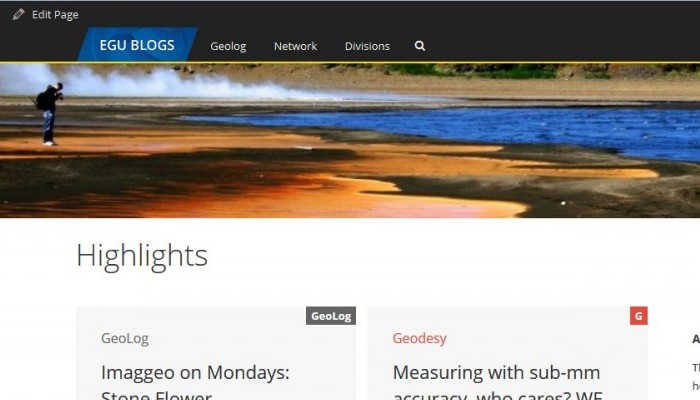
It’s a little over 12 months since we launched the new look EGU blogs and with the holidays and new year approaching, what better time to take stock of 2015 as featured in the EGU Blogs? The past year has been full of exciting, insightful and informative blog posts. At the same time, we’ve welcomed new additions to the network and division blogs.
The network blogs
A recent highlight of the year has to be the addition of a new blog to the network: please welcome our new blogger Professor David Pyle, author of VolcanicDegassing – a blog about volcanoes and volcanic activity. In 2016 you can look forward to posts about David’s ongoing research in Latin America, the Caribbean, Ethiopia and Europe, as well as historical and contemporary descriptions or other representations of volcanic activity across the globe.
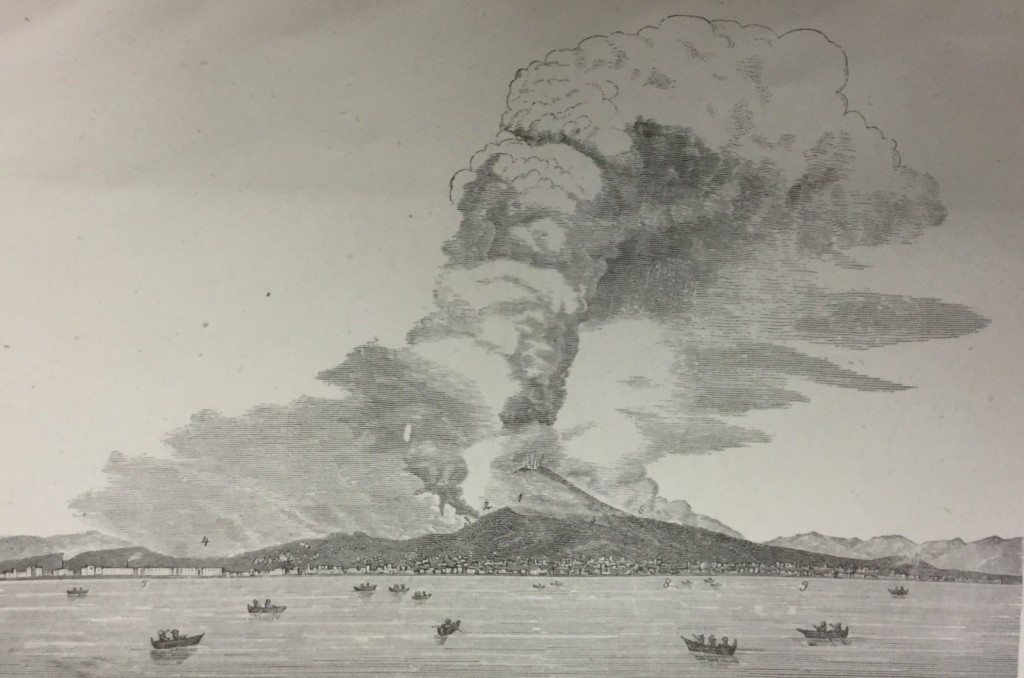
Vesuvius in eruption, April 26, 1872. Original caption ‘from a photograph taken in the neighbourhood of Naples”. (Palmieri and Mallet, 1873). Published in the Decemeber 15th post: ‘The first volcanic eruption to be photographed?‘
Richly illustrated and referenced posts have featured across the network throughout the year, with topics ranging from the journey aerosol particles go on throughout their life time, through to the role peculiarities of geology and geomorphology play in deciding on big international governance.
The most popular post written in 2015 was brought to you by Jon Tennant and featured the ichthyosaurs, an unusual turtle-fish-dolphin like marine reptile which cruised the seas 250 million years ago. The post focuses on the discovery of an ichthyosaur fossil named David, or rather Cartorhynchus lenticarpu as it is formally known, and how the remarkable specimen sheds light on the origins of these unusual creatures.
Matt Herod’s post on Geosphere in early December 2014 featuring the story behind the legal battle of Italian geochemists who were sued after publishing results stating that they could not find above background levels of depleted uranium in former Italian military firing ranges, is the second most read post across the network in the past year. With a strong resemblance to the L’Aquila verdict against the Italian seismologists, which was resolved in 2014, Matt highlights there are lessons to be learnt from both cases in the post.
Natural hazards and the April 2015 Nepal earthquakes featured heavily across the network too. In the immediate aftermath of the earthquake, the Geology for Global Development blog compiled a comprehensive list of links and resources which readers could consult to find out up to date and reliable information about the events in Nepal. A list which is still a useful resource some 8 months after the tragedy and which is the third most popular post on the network this year. Simon Redfern, of Atom’s Eye View of the Planet, wrote a piece on how and why scientists have identified Kathmandu valley as one of the most dangerous places in the world, in terms of earthquake risk.
With many of the network bloggers being in the thick of PhD research or having recently submitted their thesis, tips and hints for a successful PhD completion also proved a focus of the content across the network. Despite being originally written in April 2013, Jon Tennant’s blog post on why and how masters students should publish their research was the most popular post of the year! The most read post from Geology Jenga advertised a new, and free, online course on how to survive the PhD journey.
The division blogs
Since their launch last December, the division blogs have gone from strength to strength. Keeping you updated with news and information relevant to each division, they have also featured accounts of field and laboratory work, as well as professional development opportunities and open vacancies.
Throughout the year the division blogs have been enhanced through the addition of the Atmospheric Sciences, Energy Resources and Environment blogs and, most recently, the Biogeosciences Division blog too.
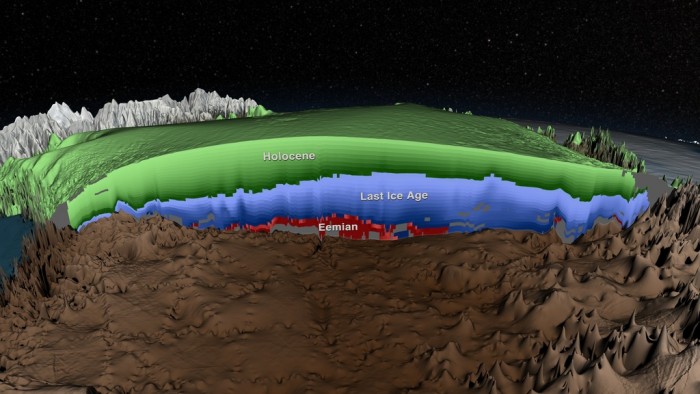
Cross-section of the age of the Greenland Ice Sheet from radar data. Credit: NASA’s Scientific Visualization Studio and MacGregor et al., 2015.
The most popular post of the year was shared by the Seismology Division and touched upon the controversial topic of whether cloud formations can be used to predict earthquakes, while the Cryosphere Division blog’s image of the week of late October featuring a cross section of the Greenland Ice Sheet was the second most popular post. Round-up posts about the 2015 General Assembly, tips for convening sessions at the conference, as shared by Geodesy Division, and some soul searching by the Geomorphology Division as to why a proposed session wasn’t included in the final conference programme also proved very popular.
Get involved
Are you a budding science writer, or want to try your hand at science communication? All the EGU Blogs, from GeoLog (the official EGU blog), through to the network and division blogs, welcome guest contributions from scientists, students and professionals in the Earth, planetary and space sciences.
It couldn’t be easier to get involved. Decide what you’d like to write about, find the blog that is the best fit for your post and contact the blog editor – you can find all editor details on the individual blog pages. If in doubt, you can submit your idea for a post via the Submit a Post page on GeoLog, or email the EGU Communications Officer, Laura Roberts, who can help with initial enquiries and introduce you to individual blog editors.
Don’t forget to a look at the blog pages for a flavour of the content you can expect from the new, and existing, blogs in 2016. The blogs are also a great place to learn about new opportunities, exciting fields of research and keep up to date with news relating to the upcoming 2016 General Assembly.

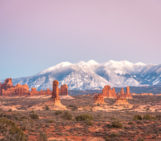

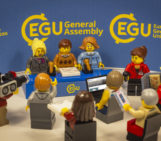
Pingback: GeoLog | Looking back at the EGU Blogs in 2016: a competition